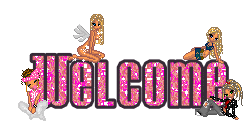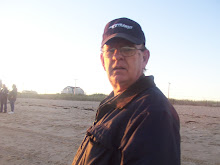
A Brief Reiki Story
For me, the most enjoyable reading about reiki is people telling their reiki stories," says Claudia Callan, a Seattle reiki master and acupuncturist. "I love the stories." My own story began with the incredible warmth of Callan's hands as she placed them on my face during my first reiki session. Initially, I felt pulsations from her hands and as treatment progressed, I slipped in and out of a deep meditative state. That is, until Callan placed her hands at my arthritic hip and suddenly her hands felt cold.
"Sensations of heat and pulsation can be an experience of the vibrational energy of reiki," Callan says. "But remember, the person receiving treatment and the person giving treatment may or may not have the same experience of sensations. What feels hot to me might feel cold to you." The warmth eventually returned, and in profound relaxation I briefly drifted off to sleep.
Nearing the end of the session, with Callan's hands still in place, I woke up alert but relaxed, with a sensation of being "done." Callan says this is not uncommon. "The body, mind, and spirit may experience being complete with treatment," she says, "a feeling of fullness. It's great to have that awareness. As the person giving treatment, I may also have a feeling of 'this treatment is finished.' I will then take a few minutes to do an internal check-in before withdrawing my hands."
These sensations and experiences--pulsation, warmth, rapid relaxation response, and meditative state--are typical for a reiki treatment. For some people, there may be other sensations or experiences because reiki expresses according to the individuals and their needs. But, Miles says, "As people are receiving reiki, what they are experiencing is only a piece of what is actually happening."
Usui's Beginnings, Takata's Way
Many bodywork modalities, such as acupuncture, massage, and reflexology, share histories dating back to ancient cultures and indigenous healing practices. In contrast, the practice of reiki is less than a century old and has no roots in ancient history, despite some claims that it is a rediscovered Buddhist spiritual healing approach. However, the concept of primordial consciousness (which in this practice is also called reiki and is accessed by the practice) is a commonly shared foundation in many spiritual and energy healing traditions, including Buddhism.
While some stories of reiki's birth may be more founded in myth than fact, accumulating through years of passage in teaching lineage, Miles tells us in her book that the undisputed originator is Mikao Usui, a Japanese man who lived from 1865 to 1926. A spiritual seeker with a lifetime of study and application of healing traditions, Usui had a profound experience while meditating at a sacred mountain site in Japan during the early 1920s. The subtle vibrations he sensed above his head awakened him to his own power to heal and empower others to do so as well. During the remaining years of his life, Usui developed and taught his spiritual healing practice, also incorporating what are called the precepts--his guidelines for daily living--which we will address later.
One of Usui's students, Chujiro Hayashi, is credited with continuing Usui's work and passing it on to Hawayo Takata. Born in Hawaii, Takata was trained in Japan, and on returning to her homeland became the first fully accredited reiki master outside of Japan. By the 1970s, she had expanded her teaching to students in the United States and Canada, creating a continued lineage that eventually spread throughout the world. Thus, Miles points out, there are now three main branches representing the reiki lineage: Usui and Usui/Hayashi, which are still taught in Japan, and Usui/Hayashi/Takata, which has spread to worldwide practice and may vary in style. The twists and turns in reiki history are fascinating, and in her guidebook, Miles lays it all out in finer detail, including the influences of these lineages on reiki practice today.
Sunflower Art, Crafts and Snacks! a dozen ideas
10 years ago






No comments:
Post a Comment